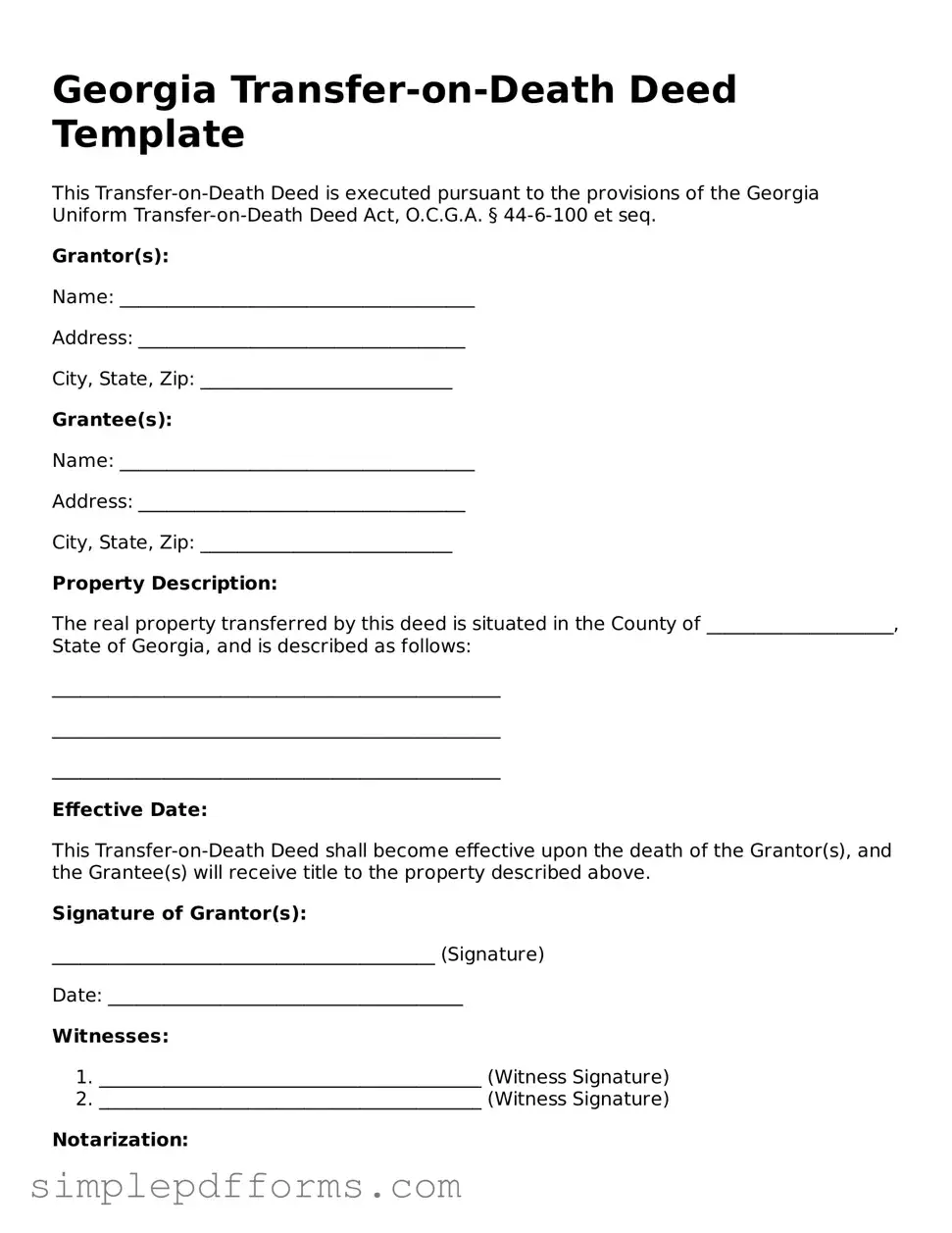Georgia Transfer-on-Death Deed Template
This Transfer-on-Death Deed is executed pursuant to the provisions of the Georgia Uniform Transfer-on-Death Deed Act, O.C.G.A. § 44-6-100 et seq.
Grantor(s):
Name: ______________________________________
Address: ___________________________________
City, State, Zip: ___________________________
Grantee(s):
Name: ______________________________________
Address: ___________________________________
City, State, Zip: ___________________________
Property Description:
The real property transferred by this deed is situated in the County of ____________________, State of Georgia, and is described as follows:
________________________________________________
________________________________________________
________________________________________________
Effective Date:
This Transfer-on-Death Deed shall become effective upon the death of the Grantor(s), and the Grantee(s) will receive title to the property described above.
Signature of Grantor(s):
_________________________________________ (Signature)
Date: ______________________________________
Witnesses:
- _________________________________________ (Witness Signature)
- _________________________________________ (Witness Signature)
Notarization:
State of Georgia, County of ____________________
Subscribed and sworn to before me this _____ day of ______________, 20____.
_________________________________________
Notary Public Signature
My commission expires: ____________________
